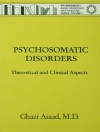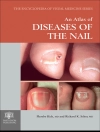The most comprehensive and authoritative reference available today on colorectal surgery
This revised fourth edition of Gordon and Nivatvongs’ Principles and Practice of Surgery for the Colon, Rectum, and Anus edited by David Beck, Steven Wexner, and Janice Rafferty strikes a perfect balance between evidence-based medicine, in-depth details, and clinical pearls. The result is a highly engaging and authoritative tome in the grand tradition of Philip Gordon and Santhat Nivatvongs. Building on the widely acclaimed previous editions’ reputation for superb quality and reader-friendliness, the fourth edition includes contributions from an expanded cadre of internationally known experts.
Significant advances have been made in this field since the third edition was published. The latest diagnostic modalities are highlighted such as MRI, CT angiography, and enterography. The first section covers essentials such as anatomy, physiology, diagnosis, colonoscopy, and patient management. Sections two through four discuss a full spectrum of anorectal diseases, colorectal disorders, trauma, unexpected challenges, and complications. Among the additions are expanded sections on transanal total mesorectal excision, genetics, personalized medicine, ‘wait and watch’ principles, outpatient management of anorectal surgery, and large bowel obstruction.
Key Highlights
- Thirty-seven chapters cover a wide array of gastrointestinal disorders such as fecal incontinence, ulcerative colitis, Crohn’s disease, diverticulitis, carcinomas, and other malignant lesions
- A multidisciplinary team approach to rectal cancer encompasses rectal cancer protocol MRI, synoptic reporting, and various neoadjuvant therapy protocols
- The use of cutting-edge approaches including laparoscopy, robotics, hyperbaric oxygen, and radiofrequency tissue remodeling
- Superb full-color plates, illustrations, photographs, diag
Tabella dei contenuti
Part I Essential Considerations
1. Surgical Anatomy of the Colon, Rectum, and Anus
2. Colonic and Anorectal Physiology
3. Diagnosis of Colorectal and Anal Disorders
4. Colonoscopy
5. Preoperative and Postoperative Management of Colorectal Surgery Patients
Part II Anorectal Disease
6. Ambulatory and Anorectal Procedures
7. Hemorrhoids
8. Fissure-In-Ano and Anal Stenosis
9. Anorectal Abscess and Fistula-In-Ano
10. Pilonidal Disease
11. Perianal Dermatologic Disease
12. Condyloma Acuminatum
13. Other Sexually Transmitted Illnesses
14. Fecal Incontinence
15. Rectovaginal and Rectourethral Fistulas
16. Retrorectal Tumors
17. Perianal and Anal Canal Neoplasms
Part III Colorectal Disorders
18. Rectal Prolapse
19. Benign Neoplasms of the Colon and Rectum
20. Colorectal Cancer: Screening, Surveillance, and Follow-Up
21. Colon Carcinoma: Epidemiology, Etiology, Pathology, and Diagnosis
22. Colon Carcinoma: Treatment
23. Other Malignant Lesions of the Colon and Rectum
24. Rectal Adenocarcinoma
25. Ulcerative Colitis
26. Crohn’s Disease
27. Diverticular Disease of the Colon
28. Volvulus of the Colon
29. Large Bowel Obstruction
30. Mesenteric Vascular Diseases
31. Radiation Injuries to the Small and Large Intestines
32. Intestinal Stomas
33. Constipation
Part IV Other Considerations
34. Traumatic Injuries of the Colon, Rectum, and Anus
35. Colorectal Complications of Colonic Disease and Complication Managemen
36. Unexpected Intraoperative Findings and Complex Preoperative Decisions
37. Miscellaneous Conditions of the Colon and Rectum












